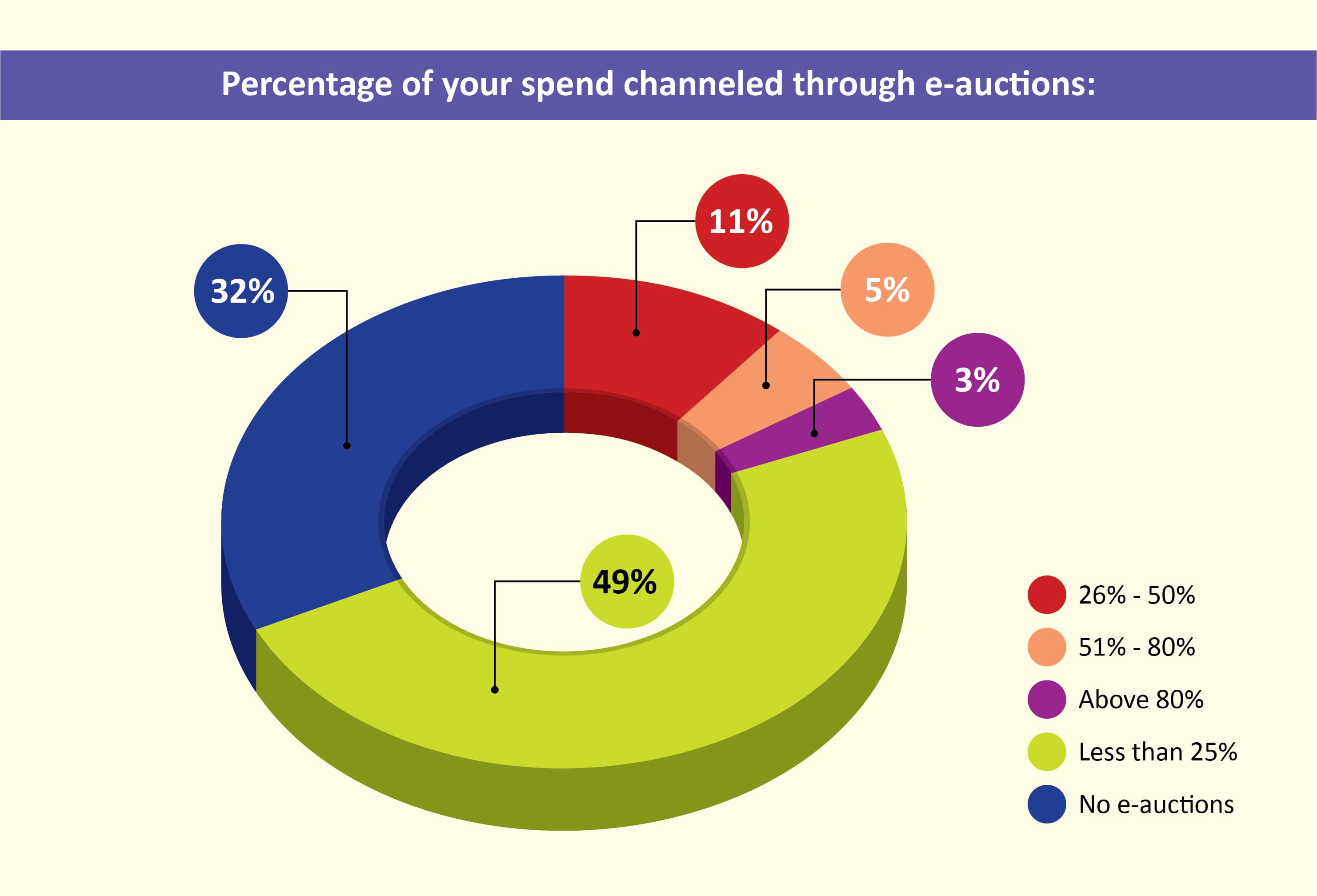
Beroe LiVE Poll: E-Auction is out of flavor, yet benefits linger

With inputs from Ddivya Kumar, Senior Analyst

E-auction, or reverse auction, involves real-time electronic competitive bidding where the buyer requests for quotation and suppliers bid for business, in an attempt to decrease the selling prices until a true market price has been reached. It is the opposite of the forward auction wherein the buyers compete to secure the goods or services by bidding the price upward.
There are several benefits to e-auction participants:
For Buyers:
- Savings in both cost and procurement time
- Expanding the pool of eligible suppliers
For Suppliers:
- Improved access to new markets
- A more level playing field to effectively compete
For Vendors:
- Opportunity to reduce customer acquisition costs
Are E-auctions Popular?
The popular belief is that reverse auctions have gained acceptance and almost all Fortune 500 companies employ e-auctions. In order to find out the popularity of e-auctions, we ran a poll among users of Beroe LiVE, a community of thousands of Procurement decision makers, to determine the percentage of an organization's total spend channeled through e-auctions.
The poll results show that nearly one-third of respondents didn’t spend any money through e-auctions. Significantly, nearly half the respondents have said that less than 25 percent of the spend under management was channeled through e-auctions. If taken together, nearly 80 percent of the respondents have not overwhelmingly voted in favor of e-auctions.

To E-auction or Not
E-auctions have their own advantages, but at the end of the day it does not offer “one size fits all” type solution. If not seen only from the prism of price, a well calibrated approach to e-auctions can still deliver benefits.
Highly standardized products or services with less differentiation are the categories that could be successfully sourced through e-auctions.
Whereas indirect categories and products/services that require after-sale service are least sourced through e-auctions.
Below are the indicative list of key categories that can be successfully sourced through e-auctions. Temp Labor
| Direct Categories | Indirect Categories |
|---|---|
|
Raw Materials |
Temp Labor & Recruitment Services |
|
MRO & Equipment |
Telecom and Courier |
|
IT Hardware |
Consulting |
|
Packaging Supplies |
Legal Services |
|
Freight & Transportation |
Creative Agencies and Advertisements |
|
Office Supplies |
IT Outsourcing, IT Software Licensing, IT hardware - Servers, desktops, laptops, printers etc. |
Source: www.scanmarket.com
Auction Planning and Implementation
Planning, implementing and driving successful e-auctions are dependent on focusing on critical success factors.
| Focus Areas | Critical Success Factors | Impact on Success |
|---|---|---|
| Planning and Preparation |
|
High |
| Internal and External Coordination |
|
Medium |
| Coordination with Finance and Procurement |
|
High |
| Communication about strategy, requirement and terms & conditions | ||
|
Ethics |
|
High |
| Optimal e-auction time period |
|
Medium |
| Live e-auction Management |
|
High |
| Awarding auction results |
|
High |
Source: Industry Experts
Steps to Overcome Barriers and Challenges in E-auction
| Barriers and Challenges | Steps to overcome barriers and challenges | |
|---|---|---|
| Buyers | Higher Ultimate Cost: Competitive priorities such as quality, reliability and flexibility are missed out in an auction owing to concentration on price alone -- the ultimate cost incurred can be higher | Buyers can include parameters such as product quality, payment terms flexibility etc. in the RFP before conducting the e-auction event. |
| Supplier Relationship Management: Sound supplier relationship management is put to risk in the absence of face-to-face interaction at the time of auctioning. | Buyers can do a preliminary analysis to shortlist suppliers based on financial stability, reputation and capability to serve. Those suppliers who do not fall under these criteria need not be invited to participate in the e-auction event. | |
| Communication, Resistance and Change management: Training, communicating and driving change internally to enable smooth and efficient auctioning process is a challenge in every organization. | Change management should manage the psychological, cultural and technological resistance. | |
| Suppliers | Biased Process: The visibility and trust factors are at stake in most of the cases and certain suppliers tend not to participate in open-bids | Supplier name can be hidden. Buyers can set rank only or rank and leading bid-only setting to encourage supplier participation. |
| Too much focus on Price: Suppliers find it difficult to differentiate themselves from the competition resulting from the focus on price alone | To avoid this, buyers can create a healthy competition by conducting RFI and RFP in which suppliers can include their key differentiating product/service features. This also encourages the suppliers to participate proactively. |
Source: www.csupom.org
Related Insights:
View All
Get more stories like this
Subscirbe for more news,updates and insights from Beroe






